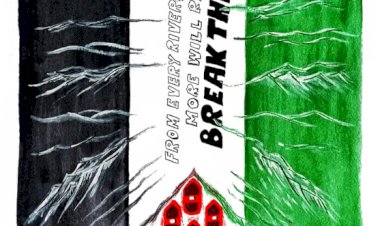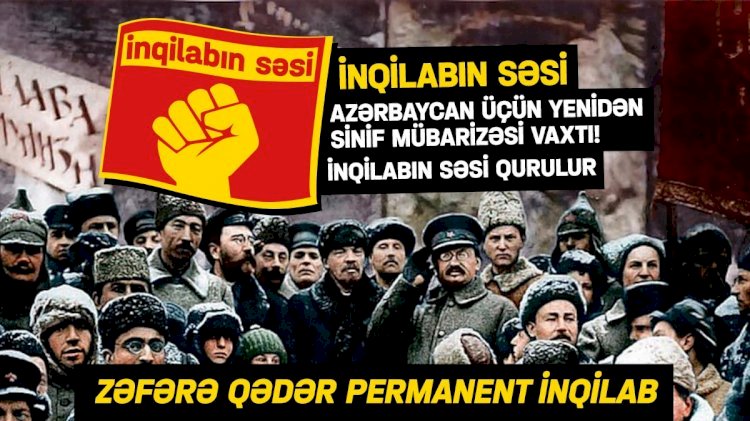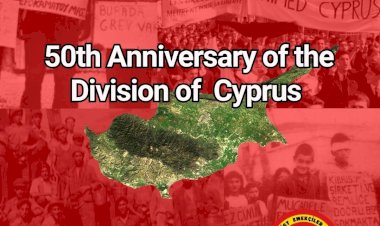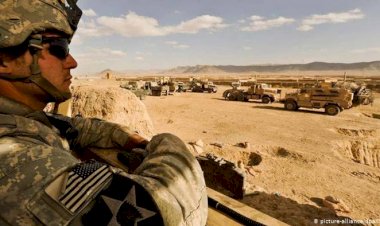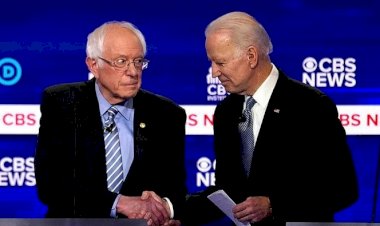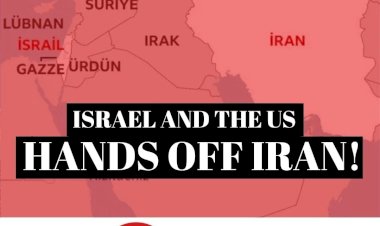Marxist Perspective on Armenian Genocide- Derya Koca
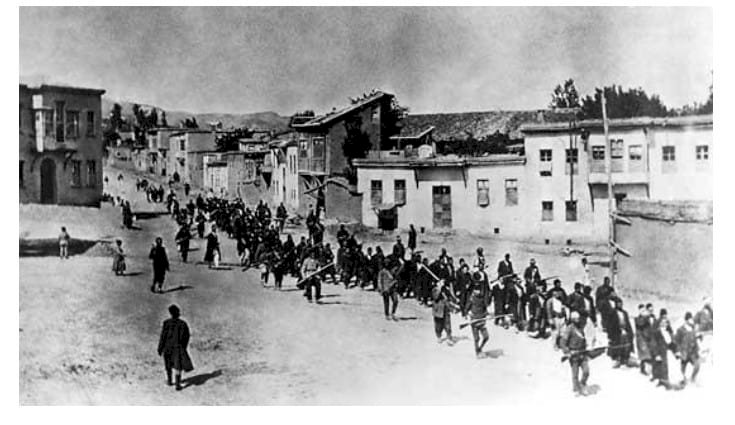
105 years ago, our Armenian sisters and brothers were torn from their lands in an irreversible way. Not only Armenians, but also Greeks, Assyrians, Jews, Kurds and many more exiled, slaughtered or assimilated. But why? Without this horrible genocide, wouldn't it be possible to live together fraternally? Why the ruling class of the new country, which was established by civil and soldier bureaucrat cadres of Ottoman, chose destroying all Armenian population?
Century of Genocide, Mass Extinction, Deportation and Migration
The main difference that distinguishes the 19th and 20th century from their antecedents is the emergence of a new form of state with the emergence of capitalism: the nation state. The nation state is nothing more than the creation of a domestic market for the ruling class of the newly “invented” nation. The founding story of these states revealed concepts such as genocide and migration. The Ottoman Empire's collapse and the foundation of modern Republic of Turkey in the 20th century has also been formed with these crimes. The basic motive of the currents formed among the high-level bureaucrats in the late Ottoman period was to save the empire from dissolution. The empire was tried to be "saved" on the basis of Ottomanism, Islamism and then Turkism. The Young Turks (İttihat ve Terakki,, latter organization of the Young Turks) who came to power after the 1908 revolution, which was achived by the united struggle of Turks and Armenians as they were the main organized powers of the era, welcomed with great joy by the Ottoman peoples, entered a Turkist nationalist orientation during this period as a salvation route. The Young Turks, who entered the First World War, would try to wipe the non-Muslims from these lands in order to purify the last remaining lands from other nationalist separations. The “deportation” decision made against the Armenians in 1915 was actually a declaration of genocide. In the 1920s and beyond, the new owner of the order would be the Kemalist cadres, who took care of the missing parts of the project. Those missing parts were Rum (Greek) and Jews mainly located in İstanbul. The Democratic Party continued the project by benching so called “the events of September 6-7” in the 1950s, that was a huge lynch campaign against Rums in İstanbul, and the work of ending non-Muslims in these lands was almost completed. Therefore, there is continuity of ethnic cleaning from the late Ottoman to the new Republic.
Armenians were the first target but it would be incomplete to understand the genocide simply as the most advanced form a self-confident ethnic conflict can take. Behind this project, on which The Young Turks and the Republic of Turkey are collaborated, there was the "creation" of a Muslim Turkish bourgeois class. Because, in the Ottoman society, entrepreneurs, traders and rich sections of the society were overwhelmingly non-Muslims, namely Armenians, Jews and Greeks. A quick solution, which could take all the wealth from the minorities, was needed to create the national bourgeoisie of Turks who were late in development. In addition, these minorities could leave if the First World War ended badly and set up their own state. The solution would be to destroy and / or banish the Armenians and Greeks massively. According to the report that the Aleppo governor sent to the Ministry of Commerce, in 1915, 80% of the trade was in the hands of Christians, and now 95% was in the hands of Muslims (1). Thus, the danger of the emergence of Christian states in Anatolia would disappear forever, and the wealth in the hands of the Christians would benefit the emergence of Muslim and Turkish bourgeoisie overnight. The Young Turk Kara Kemal: “In Europe, governments rely on either the worker or the bourgeois base. They have social support that they can trust in moments of power. We will rely on what class? ... Is there such a strong class in Turkey? Since we do not have, why not create it? ” He expressed the basic question of their program, which will also be the program of the republic ensuing years.
Even though the genocide was tried to be legitimized with claims such as: rationalizing the orders given by Talat Pasha himself and the massacres committed by the Teşkilat-ı Mahsusa[1], saying that the Armenians were the ones who committed the massacre, and that they wanted to create a ground for occupation by collaborating with Russians. Obviously, their motivation were fear of division and money. From The Young Turks to the Republic, their common historical goal becomes evident in the Turkism. In terms of both sections, Armenians and Greeks are “internal tumor” and must be dismantled.
Armenian Genocide
The first step of the cleaning operation for Armenians started with the terrorism and forced-migration of the Greeks. The houses, fields and crops of the Greeks concentrated in İzmir, Dikili, Bergama and Menemen were burned and forced to migrate with terrorism created on them with Special Forces of Teşkilat-ı Mahsusa. 300 thousand Greeks were banished at the first hand. Since the beginning of the Balkan Wars, approximately 600 thousand Greeks were either exiled from Anatolia or killed.
With the onset of World War, disasters started to happen one after another. Armenians who were once ally of The Young Turks against Sultan Abdülhamit, who ruled the Ottoman Empire with a brutal oppression that shaped the first revolutionay and modern political movements, became potential internal enemies after the war started and had to be cleaned urgently. The Armenian massacres that started in the Zeytun and Adana events in the 1890s turned into a genocide during the war years. Christians taken to labor battalions in the war experienced the first disaster. Greek socialist writer Dido Sotiriyu, who was from a Greek family in Anatolia, in her novel, Farewell Anatolia, which is the work that tells about these disastrous years of Anatolia,. She describes the labor battalions, the first move of the slaughter of Armenians during the war years: “The Turkish government did not trust Christians and sent them to special troops called the Labor Battalion without giving those weapons or uniforms. It would be more appropriate to call these special troops 'death battalions'. ” (p. 67)
Armenians were not the majority of the cities where they located but had a very large population in the provinces of the Eastern Anatolia and some major cities such as Istanbul, Adana, İzmir, Samsun etc. The issue where various sources are shared is that the Armenians formed a total population close to the Muslim population consisting of Kurds and Turks in these provinces. Armenians were also the largest and most organized of the Christian minority in the Ottoman Empire. Since the 1880s, Taşnaksütyun and Hınchak Party were in actions expressing the demands of the Armenian people. A large ethnic cleansing plan for Armenians was launched against a possible Russian invasion attempt by claiming rights in the region where Russian Orthodox Armenians live.
On April 24, 1915, when the Armenian genocide started, the Armenians in Istanbul were exiled to be dispatched to the vicinity of Çankırı and Ankara. As of May 27, this practice has been turned into a nationwide operation. Talat Pasha did not even need to prepare a legal cover, except for an official deportation decision. The governors, gangs and the Teşkilat-ı Mahsusa applied the liquidation everywhere immediately and very quickly. The decision to deploy hundreds of thousands of Armenians, mostly poor peasants, to the deserts of Deyr Zor on foot, cannot be considered as a precaution but a planned massacre. It was also known at the time that nobody would survive this journey under hunger, thirst, poverty, diseases and planned attacks of the gangs. This is exactly why it was held.
It is the plan for the elimination of all Armenians and should be clearly described as genocide, regardless of how many died. Moreover, even in 1919, Damat Ferit Pasha announced the government as "the number of Armenians who died during the deportation is 800 thousand” admitting their crimes. It should be taken into consideration that this official number is far below the real number..
During the reign of Sultan Abdul Hamid II and Mehmed V, the Ottoman Empire suffered major military defeats at the hands of the Italians in Libya, and the Balkan League, which expelled the Ottoman Empire from the rest of its remaining European Territories. Turkish refugees flooded Turkey and the empire declared bankruptcy. The Sultan was overthrown by the CUP (Young Turks) who re-amended the constitution. With WW1 looming, the Young Turks Party saw the Armenians and Greeks as thorns at their helms, assuming they would fight alongside the advancing Russian Empire that gazed its eyes on Eastern Anatolia. With a rising nationalist movement, the population of Turkey wanted a pure homogenous society. This ideological background was highly motivated by the German Empire. German Empire was the ally force of the Ottoman that fought in WW1 together. German commanders led the Turkish forces and this collaboration and interaction brought about the ethnic cleansing idea with which German army familiar. Pan-Turkism was not only very effective for the new bourgeois Turkish state but also for the interests of German imperialism. So, the idea of a radical “cleansing” idea put into practice.
The liquidation of the Christian religious sects came in full swing on April 24th, 1915, when the aforementioned leaders of the Empire were arrested in Istanbul, ultimately later to be executed. On May 29th, 1915, the CUP enacted the Temporary Law of Deportation (Tehcir Law), which enabled the military to forcibly remove all Armenians. This law essentially set in motion the forced death marches of Armenians from Anatolia to the Syrian Desert. Armenians were virtually starved to death and dehydrated during their death marches, and those who made it alive to the Syrian deserts were executed in the provinces of Aleppo, Raqqa, and Deir Ezzor. In addition, Teşkilat-ı Mahsusa organized attacks to Armenians through Kurdish tribal forces[2]. Over 1.5 million Armenians lost their lives. Close to 1 million Greeks were killed in their genocide.
Turkization of Capital
The Young Turks issued consecutive laws to shoot a second bird with the same stone. The exiled Armenianw were not allowed to take their wealth with them, they would not entrust them and sign forcibly documents to accept that they received their money from the government, their assets would not be posted to them… The aim of these orders, each of which is in the archives of the state, was to ensure that the wealth ad belongings of the Armenians, which could not be returned, changed hands very quickly. The Young Turks themselves, their close circles, and their shooter gangs seized these wealth or transfer them to the Turkish capitalists. Goods sold at a very low value; after a while, other measures were developed to prevent other non-Muslim elements (Greeks and Jews) from taking these goods. Talat Pasha did not hesitate to apply for foreign banks to get the personal bank accounts and insurance payments of the Armenians who were murdered saying that “they died anyway (2)”. After the departures, the churches were destroyed, the names of the villages-cities were changed they were given Turkish names; children and women left behind were forced to assimilation…
Yaşar Kemal recorded the massacre and seizure in Adana Çukurova in his novel, "The Murder of the Blacksmiths Market: “ In a few years, that inauspicious man became “Sir Kabakçızade” by taking the lands of Armanians through his fellowship with the deeds officer.”
Captain Ahmet Refik Altınay expressed this organized looting and massacre in this period with the following words, which will condemn him to live in misery until the end of his life: “In terms of national trade, it was almost a national murder. For participating in this murder, the officers, treasury officers, governors resigned from their positions, and they were trying to kill the miserable people. But those who are most involved in this murder are trade-related Young Turk Party MPs. Young Turk Party merchants and influential deputies were insulting the people. To ensure the murders of Young Turks, Topal İsmail Hakkı was throwing sugar in the mouths of these people, and Talat was distributing concession papers. (3)
Republican Period
After the signing of the Mondros Agreement, which declared defeat of the Ottoman and paved the way for Istanbul to be occupied, three historical leaders of the Yung Turks, Enver, Talat and Cemal Pasha immediately left the country and set out to save themselves. Mustafa Kemal, who were a low-rank Young Turk soldier, and his friends started to organize the anti-occupation movement by using the remaining elements formerly established Committees of the Young Turks. The Republic's strategy, which was built thanks to the great prestige of the military victory against the Greeks, was shaped through a historical break from the Ottoman State. Therefore, the new Ankara-based power would act with the discourse that neither the Ottoman nor The Young Turks would take any responsibility of the past. For this reason, the Armenian massacres were shown and accepted as the actions of The Young Turks. On the other hand, the allied states could use this Christian massacre. Mustafa Kemal would want to soften this as well. However, there is apparent continuity between the Republic and The Young Turks both in terms of personal figures, ideology and program. When battles such as the Battle of Sakarya and the Great Attack, which gave confidence and assertion to the movement, then Mustafa Kemal began to show his position, which revealed his intention.
The trials of the criminals of the Armenian massacre was just a tragedic comedy performed by the War Council. The accusation in the indictment was the killing of 1 million Armenians and 550 thousand Greeks. Talat Pasha and Enver Pasha were sentenced to death in their absence. Many criminals were completely cleared of blame in two years. With a decision made in April 1924, the goods of the Armenian people were awarded to these executioners or their families for reasons such as salary and compensation! Many people, who were the direct responsible for the massacre, were promoted within the ranks of CHP[3]. The most known of these names is Celal Bayar. Bayar was the executive of the Greek massacre of The Young Turks in the Aegean especially in İzmir. Then he became a minister, prime minister and president!
The denial of the genocide is the main policy in the Republic of Turkey from the very early years because this crimes was operated by a very range of bureaucrats, politicians, capitaists, tradesmen, tribal chefs and their other allies.MPs, ministers, soldiers…. All were a party of this disaster. Another reason for denial is the danger of claiming wealth over the Muslim Turkish bourgeoisie. In case of the acceptance of the genocide, the return of minority goods will be required. Which would mean that the ruling class gave up at least some of its properties.
Completing the Project
The absence of Mustafa Kemal himself in the genocide was the focus for the new Republic to bypass this issue. On the other hand, the continuation of the same racist nationalist strategy pursued by Wealth Tax (1942)[4], Lynch of September 6-7 continued the Ottoman and Young Turk state tradition. The program for the creation of a Muslim bourgeoisie has been the main economic project of the bourgeois republic. In addition, the fact that Kurds who resist Turkification have undergone migration, massacre and assimilation in the hands of the Republic reveal the continuity in the state tradition.
The partnership regarding the liquidation of Armenians continued as well: Mustafa Kemal said the following sentences when speaking with the Adana shopkeepers on March 16, 1923: “Armenians have no rights in this immaculate country. Your hometown is yours, the Turks. This country was Turk in history, so it is Turkish and will live as Turkish forever. Armenians and so on have no right here. These fertile soil is just and pure Turkish homeland ...”(4)
Since the early years of the republic, the Kemalist regime was loyal to the Muslim Turkish bourgeois class creation program. The CHP provided this continuity with the Wealth Tax it issued in 1942. Prime Minister of the period, Şükrü Saraçoğlu, defended the Wealth Tax, which means suppression of non-Muslims and looting of the goods, as follows: “Thus, we will eliminate the foreigners who dominate our market and put the Turkish market in the hands of the Turks.” (5)
In the years of the Democratic Party, in 1955, with the events of 6-7 September[5], it was almost the last point. Retired General Sabri Yirmibeşoğlu said, “What a perfect special war operation which also reached its goal.” Thousands of houses, churches, synagogues, schools, workplaces were attacked at the end of the two-day plunder and slaughter, women were raped, Greeks and Armenians were killed or crippled in Istanbul.
Conclusion
Anatolian peoples were not suppose to face a destiny based on each other's slaughter. On the eastern border, Bolshevism was founding the brotherhood and sisterhood among people under the banner of socialism. The Armenian revolutionaries, who fought against the authocracy of Abdulhamit, shouted "Socialism" on the death benches, and the fire of the 1908 revolution created a great wave of joy. The only condition for this history to change was that socialism is the only an alternative to a massacre scenario that operated to create a bourgeois class and nation state. Being very aware of this, names such as Yahya Kahya and Topal Osman, who were the murderers of Armenians and Greeks also slaughtered the communists, Mustapa Suphi, who was the Bolshevik founder of the Communist Party of Turkey, and his 15 Bolshevik comrades while they were on their road from the Soviet Russia to Anatolia in 1920.
National hostilities are inherited today. The hostile prejudices about Kurds, Armenians, Greeks and Turks divide internationalist struggle and only benefit the bourgeoisie those nations. All the bourgeois, each of whose history are full of murders and crimes, states tries take the advantages of the genocide question. However, any bourgeois state can be the real friend of Armenian people but the revolutionaries. We, the revolutionaries in Turkey fight for to take revenge of genocides from bloody bourgeois states with the struggle for socialism, the only power that can defeat those murderers.
One Solution is to build a Socialist Middle East and a Socialist World.
References
1) Erik Jan Zürcher, İmparatorluktan Cumhuriyete: Türkiye’de Etnik Çatışma, İletişim Yayınları, s. 155
2) Erik Jan Zürcher, İmparatorluktan Cumhuriyete: Türkiye’de Etnik Çatışma, İletişim Yayınları, s. 150-152
3) Ahmet Refik, İki Komite İki Kıtal, Tarih Vakfı Yurt Yayınları, s. 60
4) Osman Nuri Mecelle-i Belediye’den aktaran Tevfik Çandar, Milli Mücadelenin Ekonomik Kökenleri, İstanbul, Körfez Yayınları, s. 145
5) Barutçu Faik Ahmet’ten aktaran; Sait Çetinoğlu, Sermayenin Türkleştirilmesi, Resmi Tarih Tartışmaları, Özgür Üniversite, 2009, s. 145.
[1] The Special Organization. An Islamist and Pan-Turkic organization of Ottoman imperial government special forces unit under the War Department and was allegedly used to suppress Arab separatism, Armenian organizations and other minorities. This unit also played an important role for the first bourgeois national organization against the Western occupation.
[2] Kurdish tribes were loyal to the Ottoman Empire as their autonomous power was in the interests of the Kurdish landlords. The rulers used Kurdish tribal forces to massacre the Armenians live in Kurdistan; in turn they took the belongings, lands, houses and money of the poor Armenian people.
[3] Republican People’s Party- the first legal party of the Republic that was establihed by Mustafa Kemal Atatürk. It ruled Tukey under one party regime until 1950.
[4] A racial tax proposed by Nazi-supporter government. The aim was to transfer the capital of the minorities to the Turkish state and Turkish capitalists. The biggest part of the remaining minority population was the Greeks in Istanbul. Due to the bill, Christian Armenians had to pay 232%, Jews 179%, Christian Greeks 156% and Muslims 4.94% of their wealth in 15 days. In order to pay their huge tax debt, non-Muslim people sold out everything they had and most of them could not found the needed money as their properties lost huge value because of thousands were trying to sell their belongings at the same time. Turkish capitalists, merchants and politicians bought these factories, shops, houses that made them the new rich of mainly Istanbul. Those who could not paid their tax debt sent to labour camps, which was an idea inspired by Nazi Germany.
[5] The Istanbul pogrom, also known as the Istanbul riots or September events, were organized mob attacks directed primarily at Istanbul's Greek minority on 6–7 September 1955. The riots were orchestrated by a special operations unit of the Turkish Army set up as Operation Gladio's Turkish branch.The events were triggered by the false news that the day before, Greeks had bombed the Turkish consulate in Thessaloniki, in Greece—the house where Mustafa Kemal Atatürk had been born in 1881. The pogrom greatly accelerated emigration of Greeks from Turkey, and the Istanbul region in particular. The Greek population of Turkey declined from 119,822 in 1927, to about 7,000 in 1978. In Istanbul alone, the Greek population decreased from 116,108 to 49,081 between 1955 and 1960. The 2008 figures released by the Turkish Foreign Ministry placed the number of Turkish citizens of Greek descent at 3,000–4,000; while other sources estimates to be 2,500.







